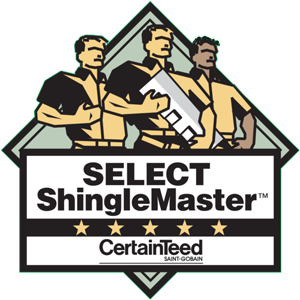Cedar, over other types of exterior materials, is chosen for its beauty and appeal more than maintenance and cost benefits.
While cedar is durable, rich, and natural, it does need to be re-stained or painted to keep its attractiveness over the years, and the bills for doing so can add up. However, it can be left to naturally age without cracking, rotting, or warping like other wood.
You’ll never have to chemically treat cedar if you like the unfinished look, and it has natural anti-fungal and antibacterial properties due to the tannins present in the wood.
You will need to consider the style of your home and those in your neighborhood. What color will enhance the beauty of your home? Given the local climate, how long will the siding material last? Is it difficult to maintain? And of course, can you afford the cost?
In short, the lifetime of your siding is truly determined by your installer. Proper installation and proper finish application are crucial to long-term performance.
Thankfully, Burr Roofing, Siding, & Windows has been doing this work for nearly 50 years! Our crews follow all manufacturers' requirements to ensure a one-time, beautiful installation.
Generally, there are two types of cedar siding:
Red Cedar – available in several basic styles and is more durable than white cedar. There are horizontal clapboard styles, shingles, and shakes. The grade is determined by grain pattern. As a rule, the narrower and tighter the grain pattern, the better the performance.
- Red cedar is usually sold unfinished because many homeowners enjoy the natural look of weathered cedar. However, we do not advise this – the material will not perform in the long term if left untreated.
- Additionally, the unfinished red cedar will not weather evenly around your home due to different weather exposure on different sides. If you insist on the look of unfinished cedar, there is a clear coat solution available that will prolong the life of the wood and enable it to weather more slowly and evenly.
- Red cedar is also available pre-primed at the factory, which means it has been coated on all sides using a primer. Sealing the product on all sides makes it less likely to absorb moisture, expand and contract, and move around like it would in its natural state. This will help to prolong the life of the wood; however, even factory pre-primed cedar will require field painting.
White Cedar – available in shingle only. This wood comes from a different tree than red cedar, located in a different part of the country.
- It is found in the Northeast and has become famous on Cape Cod, Martha’s Vineyard, and Nantucket. White cedar offers a unique look and has very different grain characteristics compared to red cedar.
- In its natural state it has almost a whitish appearance and left unfinished it characteristically weathers to a silver gray. The shingles are smaller than red cedar shingles and offer a beautiful, unique look on certain types of architecture often referred to as “beachy”.
- This product is available factory-finished and stained in various colors. But what makes white cedar so different is that it comes available using a bleaching oil stain.
- Bleached white cedar is a very popular look in Coastal Connecticut. Once bleached, you will get that silvery gray tint consistently over the entire house. This process allows for the weathering to occur very gradually and evenly keeping a uniform, attractive appearance.
Subscribe to Burr Roofing, Siding & Windows's Blog





Comments